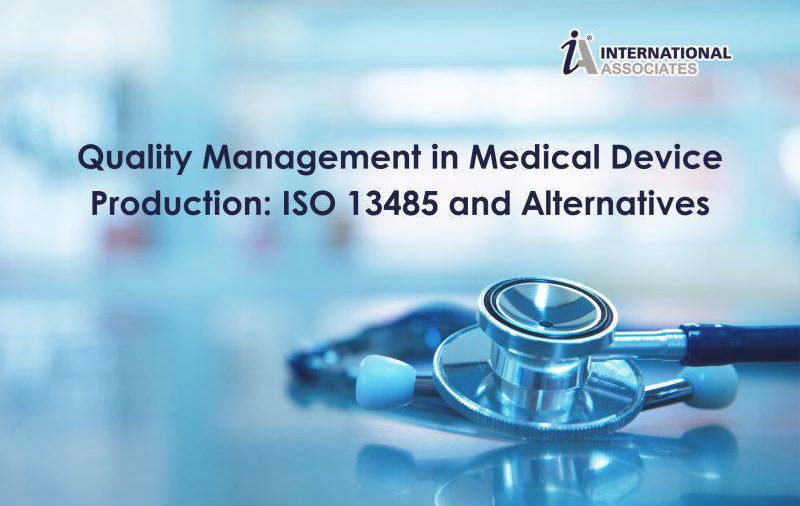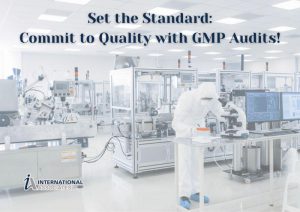𝐄𝐧𝐬𝐮𝐫𝐢𝐧𝐠 𝐂𝐨𝐦𝐩𝐥𝐢𝐚𝐧𝐜𝐞: 𝐓𝐡𝐞 𝐑𝐨𝐥𝐞 𝐨𝐟 𝐐𝐮𝐚𝐥𝐢𝐭𝐲 𝐌𝐚𝐧𝐚𝐠𝐞𝐦𝐞𝐧𝐭 𝐒𝐲𝐬𝐭𝐞𝐦𝐬 𝐢𝐧 𝐌𝐞𝐝𝐢𝐜𝐚𝐥 𝐃𝐞𝐯𝐢𝐜𝐞 𝐌𝐚𝐧𝐮𝐟𝐚𝐜𝐭𝐮𝐫𝐢𝐧𝐠 – 𝐈𝐒𝐎 13485 𝐚𝐧𝐝 𝐀𝐥𝐭𝐞𝐫𝐧𝐚𝐭𝐢𝐯𝐞𝐬
The evolving landscape of medical device regulations highlights the critical role of Quality Management Systems (QMS). At the core of every successful medical device manufacturer lies a well-crafted QMS, ensuring product quality, safety, and regulatory compliance.
One critical aspect often underlined in discussions within the industry pertains to the flexibility afforded to manufacturers in choosing their preferred quality system framework. Contrary to popular belief, regulatory authorities 𝐝̲𝐨̲ ̲𝐧̲𝐨̲𝐭̲ ̲𝐦̲𝐚̲𝐧̲𝐝̲𝐚̲𝐭̲𝐞̲ ̲𝐚̲ ̲𝐬̲𝐩̲𝐞̲𝐜̲𝐢̲𝐟̲𝐢̲𝐜̲ ̲𝐐̲𝐌̲𝐒̲ ̲𝐟̲𝐨̲𝐫̲ ̲𝐦̲𝐞̲𝐝̲𝐢̲𝐜̲𝐚̲𝐥̲ ̲𝐝̲𝐞̲𝐯̲𝐢̲𝐜̲𝐞̲ ̲𝐦̲𝐚̲𝐧̲𝐮̲𝐟̲𝐚̲𝐜̲𝐭̲𝐮̲𝐫̲𝐞̲𝐫̲𝐬̲. While this might seem liberating at first glance, it’s essential to recognize the nuanced implications associated with this freedom of choice.
Underpinning this discussion is the distinction between adopting the harmonized standard ISO 13485 and other quality system frameworks. ISO 13485 is globally recognized and tailored to the specific needs of medical device production, offering a presumption of conformity with regulatory standards. Choosing an alternative to ISO 13485 means manufacturers must rigorously demonstrate their system’s compliance with regulations. This requires detailed documentation and robust processes to show alignment with regulatory requirements.
The flexibility in choosing a QMS allows customization to meet specific needs but demands a deep understanding of regulatory expectations and a proactive compliance strategy. Regular audits and continuous improvement are crucial to navigate the dynamic regulatory environment and maintain market access.
The decision on a QMS should be made with care, understanding that opting out of ISO 13485 can complicate compliance efforts. For manufacturers of lower-risk devices, the costs of an ISO 13485 certified QMS are comparable to those of an ISO 9001 certificate.
𝐂𝐨𝐧𝐭𝐚𝐜𝐭 𝐮𝐬 𝐚𝐭 𝐞𝐧𝐪𝐮𝐢𝐫𝐲@𝐢𝐚-𝐮𝐤.𝐜𝐨𝐦 𝐢𝐟 𝐲𝐨𝐮 𝐰𝐨𝐮𝐥𝐝 𝐥𝐢𝐤𝐞 𝐭𝐨 𝐝𝐢𝐬𝐜𝐮𝐬𝐬 𝐲𝐨𝐮𝐫 𝐨𝐩𝐭𝐢𝐨𝐧𝐬.
#InternationalAssociates #Healthcare #MedicalDevices #Technology #Manufacturing #QualityManagement #RegulatoryCompliance #ISO13485 #ManufacturingExcellence #PatientSafety #QualityAssurance #MedicalTechnology





